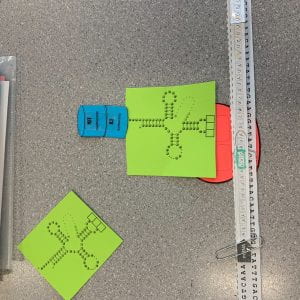- In terms of maximizing diffusion, what was the most effective size cube that you tested?
- The 1cm cube was the most effective because it was completely diffused and the biggest difference in surface area to volume ratio, 6:1. As a smaller cube, it is more efficient.
2. Why was that size most effective at maximizing diffusion? What are the important factors that affect how materials diffuse into cells or tissues?
- The 1cm size cube was the most effective at maximizing diffusion because it has the biggest surface area to volume ratio. Surface area and volume are the important factors that affect how materials diffuse into cells or tissues.
3. If a large surface area is helpful to cells, why do cells not grow to be very large?
- Even though a large surface area is helpful to cells, the cells do not grow to be very large because the ratio of volume decreases while the volume increases.
4. You have three cubes, A, B, and C. They have surface to volume ratios of 3:1, 5:2, and 4:1 respectively. Which of these cubes is going to be the most effective at maximizing diffusion, how do you know this?
- The 4:1 cube is going to be the most effective at maximizing diffusion because it has the biggest difference in ratio, similarly to the 1 cm cube in my group’s lab. As I compare the numbers of the ratio that I got during our lab, I can figure out which cube will have the highest diffusion ratio because the ratio is surface area:volume.
5. How does your body adapt surface area-to-volume ratios to help exchange gases?
- The surface area to volume ratio of a cell must be in a way such that the cell membrane has enough surface are to serve the organelles which includes exchange of gases. The cells grow while its surface area to volume ratio decreases, reducing the rates of gas exchanging.
6. Why can’t certain cells, like bacteria, get to be the size of a small fish?
- It has a high ratio of SA:V because it is very small unicellular organism. It has too much volume, so it can not be the size of a small fish. Also, there is a limitation for the cells to get nutrients.
7. What are the advantages of large organisms being multicellular?
The size of organisms is not limited so, they can grow much bigger. Also, they can live longer than unicellular organisms. Additionally, they have organized cells into tissues to do their special jobs, so they can work more efficiently.














